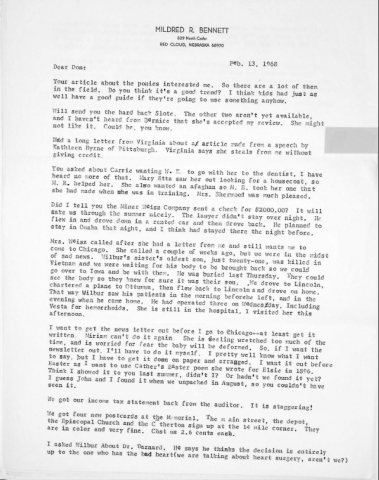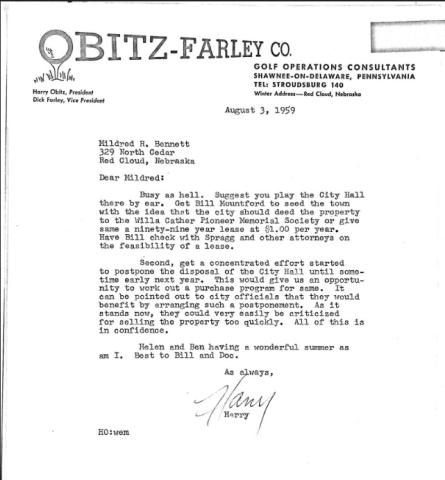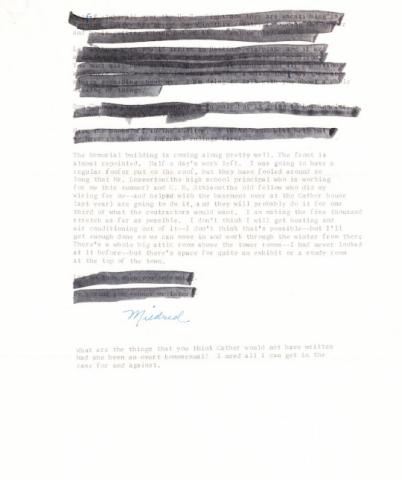


Annotations from the Archive: Our Organizational History
In the summer of 1957, Mildred Bennett and the founding members of the Willa Cather Pioneer Memorial felt that their work in Red Cloud was well underway, and they decided to begin a newsletter, “so that we could spread the word around that we were trying to preserve and restore Willa Cather’s country and artifacts.” The organizations aims were:
- To perpetuate an interest throughout the world in the work of Willa Cather
- To identify and restore to their original condition places made famous by the work of Willa Cather
- To provide for Willa Cather a living memorial in the form of art and literary scholarships
- To secure the bonding, insurance and housing of permanent art, literary, and historical collections relating to the life, times, and work of Willa Cather.
These aims were big enough in their own right, but the Willa Cather Pioneer Memorial Newsletter was a way to promote the work, recruit members, and expand the legacy of Willa Cather far beyond the borders of Nebraska.
And it worked.
The Mildred Bennett Collection contains a vast amount of organizational history, from the first idea of opening a museum, to the first architectural renderings of Bennett’s vision for an International Willa Cather Center in 1989. Her collection contains 125 linear feet of papers and books related to her early study of Cather, publication of The World of Willa Cather, and the preservation of the Farmers and Merchants Bank and Childhood Home. The letters and materials in the Don Connors Collection and the John March Collection, read in conjunction with Bennett’s papers, provide behind-the-scenes details of building acquisition, publishing frustrations, and the big personalities that surrounded Willa Cather and sometimes disagreed about how to preserve her legacy. The Willa Cather Pioneer Memorial Newsletter was the public voice of the organization, but Bennett’s papers reveal how the sausage was made.
